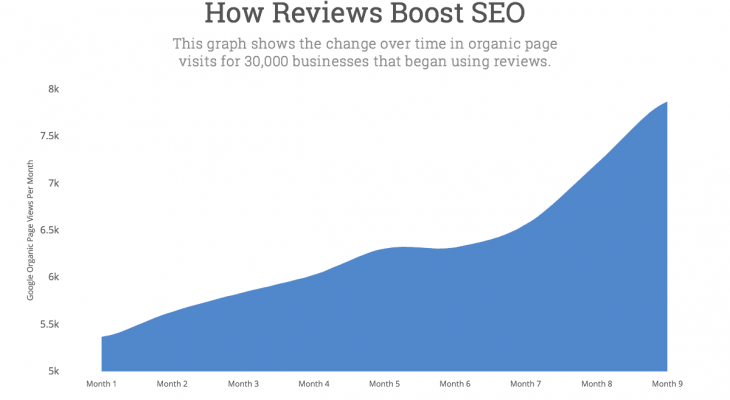User-generated content, or UGC, can be anything from pictures and videos to blog posts, reviews and testimonials, created and shared for free by an online audience. Aside from being a great way to gather free content, the use of UGC has been repeatedly proven to increase engagement, conversions and overall brand perception when it’s done right.
A study by Photoslurp found that user-generated product images were five times more likely to convert than brand-made content. Even for companies whose conversions take place offline, the believability factor of UGC helps to build trust, with 92 percent of consumers saying that they trust user-generated content above and beyond traditional advertising.
Content marketers often cite a lack of resources as one of their biggest obstacles, but campaigns based around user-generated content are as low-cost as they are low-risk. So, how do you give your marketing strategy a much-needed boost with UGC?
Though social-heavy, this tactic can also revitalize your SEO and email marketing, improving trust and authority for your website, as well as your brand.
Social proof for SEO
While the engagement potential of user-generated content is fairly well publicized, the ability of UGC to benefit SEO is less well known.
According to Moz, online reviews make up around 10 percent of overall ranking factors for Google and other search engines. Quantity, velocity and diversity of reviews are all factors in how high up in SERPs your site appears.
Reviews on sites like Yelp and Google My Business don’t just help to bring you business because people hear good things; alongside establishing your legitimacy with users, reviews show Google and other search engines that you’re trustworthy and therefore, worth displaying ahead of competitors.
This graph from Yotpo shows the change in page views received by 30,000 business websites that started to focus on generating online reviews as part of their marketing strategy:

Of course, it isn’t all about offsite reviews. The websites studied by Yotpo also began offering users the option of leaving reviews onsite, too. Why does this help? Because it shows search engines that your site is being frequently engaged with, and provides a steady stream of fresh new content even on pages which you aren’t updating yourself.
When Coffee for Less rolled out UGC posting capabilities for reviews onsite, they captured more than 6,000 comments over a three-year period. Organic search rose 10 percent, but more impressively, conversions shot up by 125 percent.
Only 40 percent of internet users trust ads in SERPs, and even fewer have any trust in other forms of online advertising, but 70 percent trust the opinions they see posted online, and almost all say they have faith in recommendations from people they know. The more positive user reviews your site has, the better your chances of making sales.
Reviews are a natural way to help your site rank for long-tail keywords, and by looking at customer comments, you can also see how customers are phrasing their concerns and feedback. This can be used to shape your own SEO implementation, as well as your brand messaging.
Related: What Startups Need to Include in Their Digital Marketing Strategy
Incentivize engagement
The “If you build it, they will come” attitude is not something you can rely upon if you want to really make the most of UGC. While reviews come naturally, images, videos and blog posts are a valuable commodity for your content marketing. Simply creating a hashtag isn’t necessarily enough to get your audience creating content that you can use.
If you look at some of the best user-generated content campaigns, you’ll notice that there’s always some kind of incentive. This doesn’t mean you have users competing to win a physical prize, or even that you need to offer discounts or freebies to people who get involved. The cost-effective and creative way that many brands harvest free content is by offering to give users five minutes of fame.
One campaign by Real Gap Experience even incentivized the creation of content with the prize of creating even more content – offering users the chance to write a post for the Real Gap blog, by winning a hashtag photo contest.
Take Burberry, for example. The company’s Art of the Trench campaign encouraged users to upload photos of themselves wearing Burberry products. There was no discount or prize offered for participants, just the chance to see their photo on Burberry’s site.
The campaign crowdsourced a huge number of images that Burberry went on to use in other social campaigns and advertising, and also caused a 50 percent year-on-year surge in e-commerce sales.

It’s important to decide at the start of your campaign whether your goal is to increase awareness, to drive conversions, or even to find inspiration for a new or updated product that your audience will love. Whatever the desired outcome, tailor your startup’s strategy to fit.
Combine user-generated content and email strategies
In a recent survey by Sendgrid, 74 percent of those surveyed said that their preferred channel for companies or brands to contact them was via email.
A 2016 study by the Direct Marketing Association found that email had a median ROI of 122 percent, which was more than four times the number that social media, direct mail and paid search offered.
Teaming up email with user-generated content can create strategies with huge potential. Just because a customer has made a purchase from you or signed up to your mailing list doesn’t necessarily mean he or she follows your social streams. Likewise, there may well be plenty of users on your social accounts who have never received your marketing emails.
Interlink hashtag campaigns with email, encouraging email users to help spread brand awareness on social platforms, and incentivizing social users with the chance to be featured in email newsletters.
Featuring UGC photos in your email marketing content can help to increase trust and conversions, just as an increasing number of social users touting a brand name helps to increase awareness and improve brand perception. Better yet, you capture images and video content that you can use to promote your brand, on top of increasing your startup’s email database for future marketing campaigns.
Sign Up: Receive the StartupNation newsletter!
Take note and interact
You can gain important insights by paying attention to the content your audience shares. Analyzing user-generated content helps brands to better understand their audiences, by seeing more accurately what those audiences find engaging. Your content marketing strategies should be data-driven, and monitoring which topics and themes are most popular and create the best results should help to shape your future campaigns.
It’s also worth remembering that it’s as important for you to interact with users online as it is to encourage them to interact with you. Shoppers who interact with UGC are 97 percent more likely to convert, but they expect it to be a two-way street. If you’re gathering content via social media, make sure your accounts are “liking” and commenting on users’ contributions. Give them the feeling that you’re grateful for their contribution, because after all, they’re working for you free of charge.






